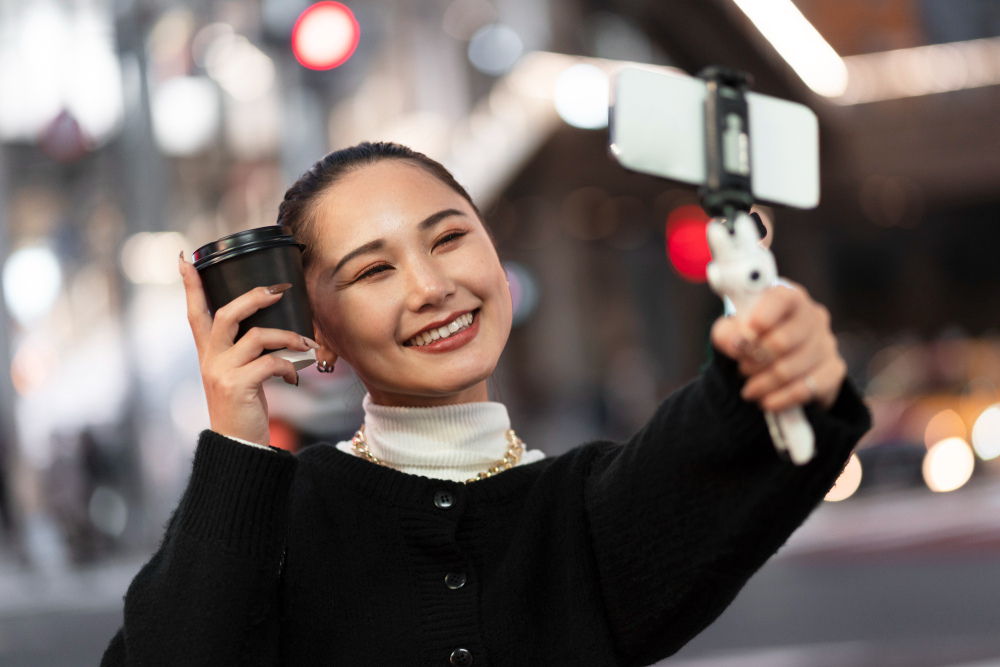Unlocking the Power of Influencer Marketing in Japan: Strategies for Success in a Unique Market
For advertisers looking to expand internationally, Japan was once considered an extremely closed-off market with significant challenges in localization. However, despite the high customer acquisition cost (CAC) and localization difficulties, advertisers have not abandoned this third-largest global mobile gaming and high-ROI region.
So, how can advertisers quickly penetrate this mysterious and complex market while achieving successful local communication? This article explores the current state and future trends of influencer marketing in Japan, offering insights into the deeper cultural and market dynamics of the region.
Background and Current State of Influencer Marketing in Japan
Data shows that among Japan’s 120 million population, 86% are active internet users, ranking sixth globally, behind China, India, the U.S., Brazil, and Indonesia. The internet usage rate for Japanese people aged 20-49 is nearly 100%.
With the rise of smartphones and social media, Japan’s online advertising expenses grew by 16.5% year-over-year in 2018, second only to television advertising. In 2019, online advertising costs were expected to surpass those of television for the first time. Japan’s social media ecosystem is relatively mature, with platforms like Line, Twitter, YouTube, Instagram, and Facebook widely used.
Line is the most popular social media app in Japan, with over 70 million users, accounting for about 70% of the country’s population. Facebook and Instagram are also commonly used, with Facebook’s user base expected to surpass 30 million in 2019, and Instagram gaining popularity through the dissemination of traditional aesthetics and cultural customs.
Twitter, favored by younger users, is one of the primary platforms for influencer marketing in Japan, with over 45 million users. Twitter’s success in Japan is largely attributed to its mobile-friendly nature and anonymity—two factors highly valued by Japanese social network users.
YouTube is another highly popular platform for influencer marketing in Japan, with over 46 million monthly active users, far exceeding other video apps like Twicas, Vine, and Mixchannel. According to Nielsen’s 2017 survey, YouTube ranked first in monthly unique visitors (UV) among users aged 18-34, surpassing LINE, Facebook, and Twitter.
The robust development of social media in Japan has also fueled the growth of the local influencer economy. Influencer marketing in Japan has become more organized and professional, with many influencers signing with agencies. Some top influencers, for instance, have partnered with Japan’s largest agency, UUUM.
Trends in Influencer Marketing in Japan
What are the future trends for influencer marketing in Japan, a market known for its structured and somewhat closed nature? And how should international advertisers tailor their influencer marketing strategies to succeed in Japan?
Influencer Marketing’s Value Proven, Prices Continue to Rise
Although influencers in Japan are relatively expensive, user loyalty and willingness to pay are higher, making it worthwhile for brands to collaborate with them. Influencer marketing, in particular, helps advertisers reach high-value users who are more likely to make purchases.
For example, a similar advertising budget might acquire 30 customers through other channels with only a 1-2% conversion rate, whereas influencer marketing could yield 30 customers with a 5-8% conversion rate. Therefore, influencer marketing is better suited for addressing the challenges of promoting products in Japan and supports long-term growth for advertisers. In recent years, as influencer marketing in Japan has proven effective, prices have shown a noticeable upward trend.
Twitter and YouTube as Key Channels for Influencer Marketing
Twitter is extremely popular among young Japanese users, especially millennials who are open to new products, making it a prime channel for accelerating localized influencer marketing in Japan. YouTube is similarly popular, with high fan loyalty and a young audience, making it another powerful influencer marketing channel for product conversion.
Tips for Influencer Marketing in Japan:
- The influencer marketing model in Japan is highly developed, with influencer agencies growing rapidly, such as Japan’s largest agency, UUUM.
- Japanese influencers value their reputation. Once they sign with an agency, they typically do not take on private work.
- Influencers in Japan have a strong sense of copyright, and collaboration requires the advertiser to provide relevant copyright documentation and promotional patent materials.
- Japanese influencers are generally very professional and diligent.
- Influencers in the entertainment and gaming sectors are particularly prevalent in Japan.
- Collaborating with Japanese influencers is relatively stress-free; they communicate openly, revise video content as needed, and meet contract requirements. If the first collaboration goes well, long-term partnerships are highly possible.
- When working with Japanese influencers, it’s important to contact them two months in advance since many games or products have scheduled launch periods. If there are conflicts with other products, influencers may refuse the collaboration.
- According to reports, Japanese consumers have the highest average annual spending in the world.
Cultural Sensitivity and Symbolism in Influencer Marketing
When advertising in Japan, it’s important to be mindful of local customs, traditions, and symbols. For instance, their samurai armor is not just a relic of the past but remains a powerful symbol of honor, discipline, and protection in Japanese culture. Utilizing this imagery appropriately in campaigns or influencer content can resonate deeply with Japanese audiences, who value their rich history and cultural heritage. This attention to cultural nuances can strengthen the connection between a brand and its target audience, reinforcing loyalty and brand recognition.
Conclusion
In summary, how you leverage Japanese influencer marketing and social media platforms depends on your business goals and target audience. By respecting cultural symbols, like the samurai armor, and working with trusted influencers, advertisers can unlock the potential of this lucrative yet enigmatic market.




